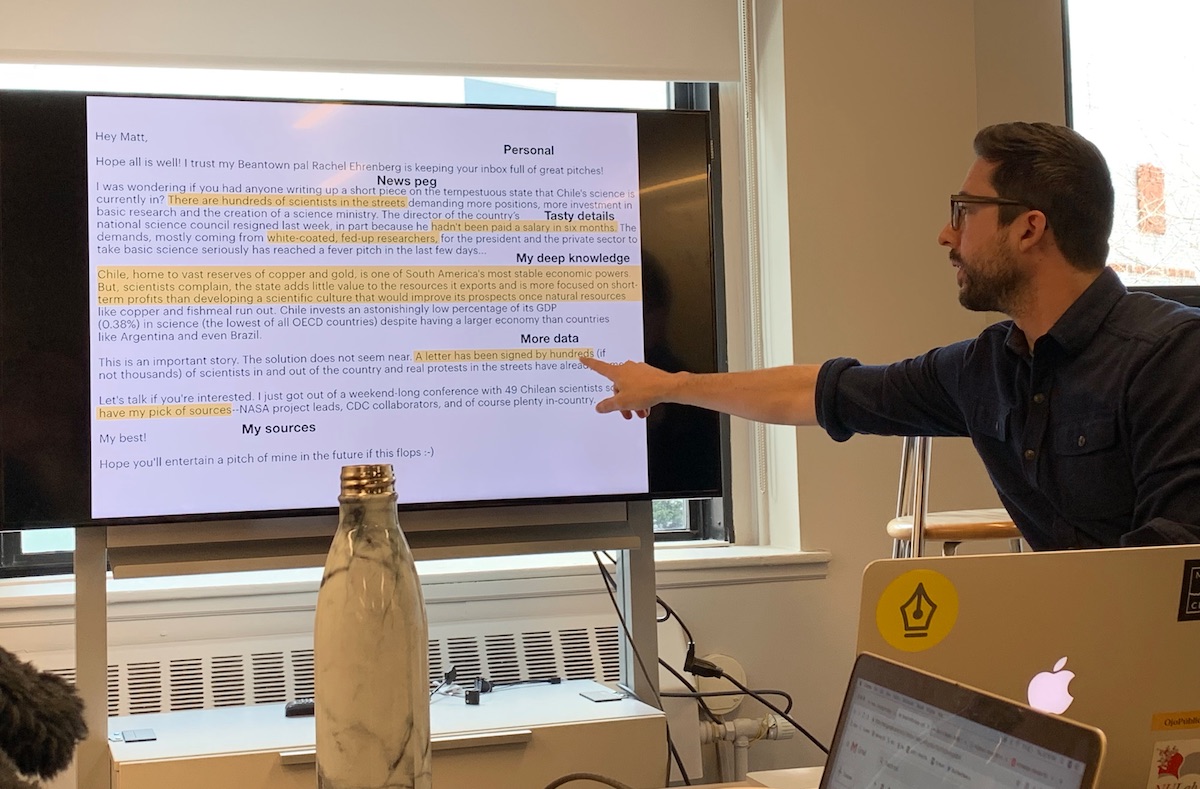Ten tips for freelance writing
What is the key to being a successful freelancer? According to Aleszu Bajak, who has freelanced dozens of stories to major publications, the key is getting over rejection.
“Get used to being rejected,” said Bajak, a lecturer at Northeastern’s School of Journalism. Bajak spoke about freelancing at Pizza, Press & Politics, the School of Journalism’s lunchtime speaker series, on Feb. 21. Bajak said that for every publication he has successfully been published in, he has been rejected at least twice.
Bajak explained “the pitch” of a freelance piece as an art form. An effective pitch email should include information on what the point of the pitch is, why it is relevant now, why you are the person to write it, what sources and data you have, and how much space you’ll need. It should be well-written without any typos or grammatical errors, but does not have to be overly formal. Most importantly, Bajak explained, a pitch email should make apparent why the story is important for the publication to be doing.

“You should be an expert on your topic,” said Bajak. A freelancer needs to show that they are deeply sourced and informed. They also need to know about the publication they are pitching to in order to avoid pitching an already covered story. “Exploit any kind of connection you have. Namedrop anyone you can,” recommended Bajak.
A pitch should be short and clear, but hit all of the important notes. “Your pitch should work as a blurb to your story,” said Bajak. He recommended having other people proofread your pitch before you send it off. If you have an excellent headline and lede, it is acceptable to include that in the pitch email – but avoid attaching a full draft, he said.
Common problems are that the pitch is too broad, overdone, too small in impact or scope, too difficult to quantify, or too complicated. Bajak brought up the website The Open Notebook, which has a pitch database where writers post successful pitches.
Two days is the amount of time Bajak waits before going to another publication with the pitch. He recommended having at least ten options for publications for every story pitched. Say “yes” to everything, because opportunities can present themselves in unexpected ways. In order to keep getting assignments, one should always say yes, he said, and change your schedule accordingly. “The answer is always yes,” he said.
Freelancing, Bajak said, is a job that requires you to be self-sufficient. You should be getting the photo yourself, finding the sources yourself, and always editing yourself. You should also advocate for yourself. Bajak uses a time log to keep track of how much time he is spending on freelance projects and never accepts less than 25 cents per word. A couple of years in and you should be getting $1 or more per word. “Do whatever you need to do to make it work,” he said.
Freelance writing can appear difficult, but Bajak makes it seem easy. He has been published in The Washington Post, The Huffington Post, Esquire, MIT Technology Review, Undark magazine and other top publications.
If you are passionate about writing and willing to work hard, freelancing can work for you. “The stories are going to keep writing themselves,” he said.
Access Bajak’s full slides here.





